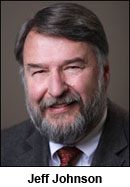STATE GOVERNMENT
Buyouts aren’t saving as much as advertised

When 10,000 rallied at the Capitol on April 8, 2011, several speakers urged opposition to lump-sum buyouts in workers’ compensation — also known as “starve and settle.”
OLYMPIA (June 19, 2013) — The state Department of Labor and Industries announced today that it is transferring $242 million from workers’ compensation reserve funds to cover expenses because the controversial new “structured settlements” program isn’t saving the system as much as advertised.
Jeff Johnson, President of the Washington State Labor Council, said in a statement today that the news comes as no surprise, but is still disappointing.
“Organized labor argued all along that projected savings were wildly off base. Those inaccurate projections from 2011 were the biggest reason legislators legalized the lump-sum buyouts in the first place,” Johnson said. “Now some legislators want to double-down on this failing experiment by expanding the buyouts and they have a new set of ‘projected savings’ that are also grossly inflated.”
He urged legislators to “stop chasing phantom savings down this rabbit hole. It’s harming injured workers and their families.”
Here’s his full statement:
Statement by Jeff Johnson, President
Washington State Labor Council, AFL-CIO
Wednesday, June 19, 2013
 The Department of Labor and Industries announcement today that cost savings from structured settlements are less than expected comes as no surprise. Organized labor argued all along that projected savings were wildly off base. Those inaccurate projections from 2011 were the biggest reason legislators legalized the lump-sum buyouts in the first place. Now some legislators want to double-down on this failing experiment by expanding the buyouts and they have a new set of “projected savings” that are also grossly inflated.
The Department of Labor and Industries announcement today that cost savings from structured settlements are less than expected comes as no surprise. Organized labor argued all along that projected savings were wildly off base. Those inaccurate projections from 2011 were the biggest reason legislators legalized the lump-sum buyouts in the first place. Now some legislators want to double-down on this failing experiment by expanding the buyouts and they have a new set of “projected savings” that are also grossly inflated.
The good news is that the workers’ compensation system is in stronger financial shape than it has been in five years. Even after taking out this $242 million, the system’s reserves increased 19 percent to nearly $700 million in the second half of 2012. As has happened for decades, the workers’ comp system and its reserves recover from recessions as the economy recovers. After two years of zero rate increases in 2012 and 2013, and even with today’s announcement, the system is in stronger financial shape and there is no reason to believe a significant rate increase is in store for 2014.
Organized labor and other advocates for injured workers continue to oppose structured settlements. The only way they save money is if injured workers and their families accept less money than they would otherwise receive. The fact that it’s not saving as much money as its supporters promised is evidence that many workers understand these buyouts are not in their best interests. That’s why buyout supporters inserted language in this year’s legislation that explicitly prevents state officials from considering what’s in the “best interests” of injured workers when approving certain buyouts. Such legislation undermines and weakens this important safety net, and ultimately would shift costs to taxpayers in the form of social services for disabled workers whose buyout has run out.
Lawmakers should stop chasing phantom savings down this rabbit hole. It’s harming injured workers and their families.





